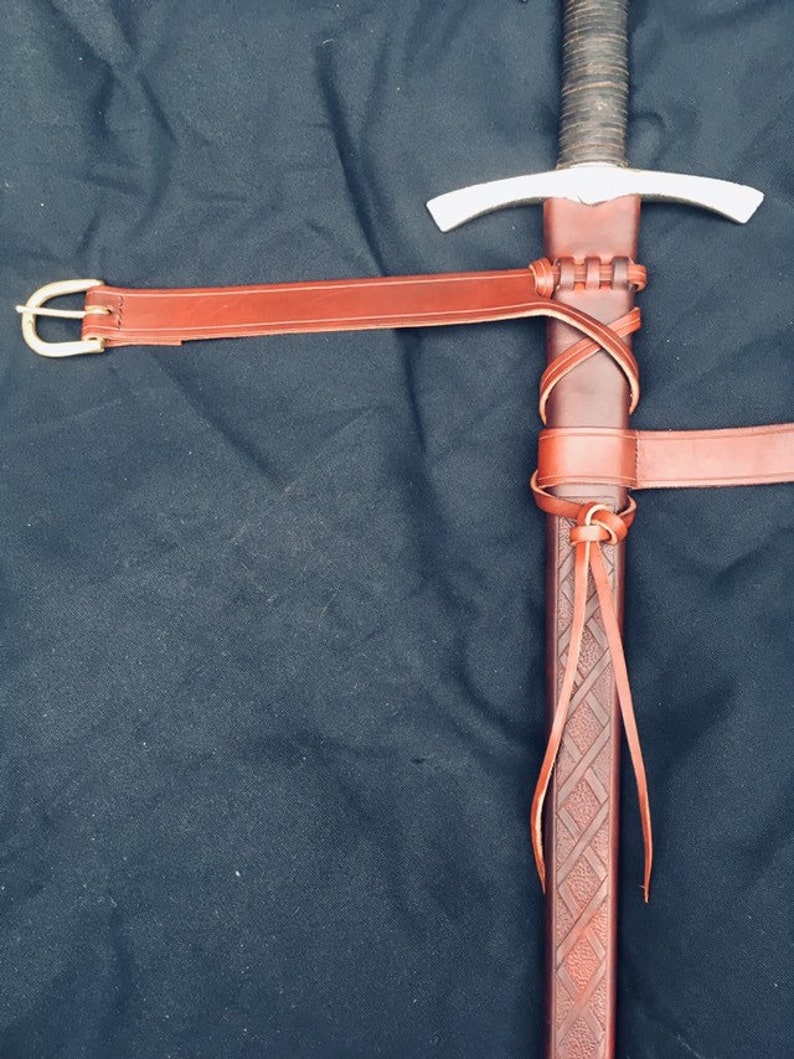

Finer scabbards drew attention to one’s sword, and simultaneously could demonstrate the wearer’s social standing, as detailed metallurgical work was typically affordable only to wealthier individuals.

Scabbards from the medieval period thought to belong to knights frequently were made of precious metals and displayed fine patterning and craftsmanship. Knights often bore ornate scabbards, which signaled their prestige and social influence. Though the scabbard had many practical uses, it also had ceremonial and social value. When feasible, craftsmen would line the inside of scabbards with fine fur or an animal pelt in order to create a smooth draw, and to prevent the blade from wearing down against the inner seam of the scabbard. Some recovered scabbards appeared to have been attached to belts via metallic loops, while others were simply fastened with leather straps. Archaeological finds, particularly grave excavations, indicate that the scabbard was often fixed to a heavy belt at the hip, normally with a buckle or metallic clasp of ornamental quality. In addition to holding one’s sword, a scabbard also provided some protection to swords against the elements, preventing degradation and rust, and helped prevent accidental injuries that could arise from moving around quickly with a bare blade. Though they are often metallic in in modern times, they were primarily composed of wood or leather in the medieval period. The scabbard has an archaeological history dating back to the Bronze Age. Though modern culture often depicts the scabbard as mostly a medieval object, the scabbard is in fact known to be one of the oldest tools men have used, and is thought to have existed since the creation of the sword. Traditionally, the scabbard was fixed at one’s hip, or less frequently clasped to one’s horse, and facilitated easier access to the sword it contained. The scabbard is similar to a sheath in its shape and often in material composition, but specifically describes an object intended to store elongated swords rather than knives, or shorter blades.
Medieval sword scabbard full#
The sword features a full length tang peened to its pommel.An iconic piece of medieval military equipment, the scabbard is an item used for storing a blade. The pommel also features the cross sigil of the Templar Knights.

The straight quillons of the cross guard provide good defense while the wheel pommel balances the blades weight. The gently tapered profile keeps the blade wide and strong, great for heavy strokes and slashes that will batter opponents with ease, while the broad point is surprisingly effective for thrusting attacks. The broad, powerful blade is forged entirely from dual hardened 5160 high carbon steel. This impressive blade is modeled after typical Crusades era swords, featuring a cruciform design. This Two Handed Templar Sword with Scabbard is designed for the warrior who wants great power as well as versatility and responsiveness. Women’s Medieval & Renaissance FootwearĬrusaders were known to favor a wide variety of weapons, and the Knights Templar were no different.


 0 kommentar(er)
0 kommentar(er)
